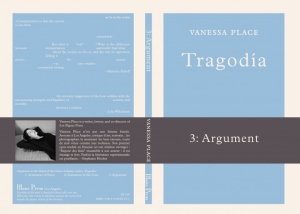Tragodía 3: Argument
Drafting a virtuous brief is not simply a matter of avoiding grammatical mistakes and typographical errors. Rather, a virtuous brief should demonstrate to the court the correctness of the advocate’s position by showing that the writer has diligently and carefully researched the legal issues and is thoroughly acquainted with the record in the case. The writer should also consider the court’s heavy workload and craft a brief to assist the court to review the merits of the case and the legal issues presented. A virtuous brief is clear, concise, and persuasive. It should be free from muddy arguments and dense prose. A brief should help the court resolve the legal dispute before it. First, present a straight-forward argument designed to convince the court that the result you advocate is fair, legally correct, and factually supported. Start out by honestly explaining the applicable state of the law. Discuss precedent from other circuits when there is a circuit split. Second, provide a thorough analysis. Explain all the steps in the analytical process. The brief should explain how the facts fit with the law in easy-to-follow steps that support the conclusion being advocated. The brief ought to anticipate and resolve questions that are likely to arise in the reader’s mind to minimize any doubts as to the brief’s accuracy or veracity. Third, write for clarity. Clear writing is essential to making a brief easy to read. Avoid cluttering the brief with unnecessary words. Finally, be concise. The argument should be short, uncomplicated, logical, and written in clear language that is easy to read.
Tragodía is composed of the three parts of an appellate brief: 1: Statement of Facts, which sets forth, in narrative form, the evidence of the crime as presented at trial; 2: Statement of the Case, which sets forth the procedural history of the case; and 3: Argument, which are the claims of error and (for the defense) the arguments for reversing the judgment. Place’s Statement of the Case project involves reproducing Statements of the Case from some of her appellate briefs and representing them as poetry.
Vanessa Place is a writer, a criminal appellate defense attorney, and co-director of Les Figues Press. Of Vanessa Place and Robert Fitterman’s Notes on Conceptualisms, Mary Kelly said, “I learned more about the impact of conceptualism on artists and writers than I had from reading so-called canonical works on the subject.” Place is author of Dies: A Sentence, La Medusa, Notes on Conceptualisms (co-authored with Robert Fitterman), Exposé des Faits, and The Guilt Project: Rape, Morality and Law. Other work includes the Factory Series of chapbooks and a sound collaboration with Stephanie Taylor, Murder Square Dance on the Spiral Jetty (both with oodpress).
- Forlag: Blanc Press
- Utgivelsesår: 2011
- Kategori: Poesi
- Lagerstatus: Ikke på lagerVarsle meg når denne kommer på lager
- Antall sider: 298
- ISBN: 978-1-934254-19-6
- Innbinding: Innbundet















